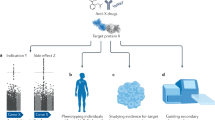Abstract
Recently, many state-of-the-art omics technologies are being applied to systems toxicology research because evaluation of toxicity in pre-clinical trials is a big issue in the pharmaceutical industry. Now, genetic polymorphisms are also considered in systems toxicology because polymorphism information can be used to explain individual-specific toxicity and/or side effects. However, in spite of its importance, no well-organized database for individual toxicity has been reported to date. To address this issue, we first extracted toxicity-related human gene information from the CTD, and then, using comparative genomics techniques and retrieving information from animal databases, we gathered the corresponding genes from the mouse and rat. The CTD (Comparative Toxicogenomics Database), dbSNP, RGD (Rat Genome Database), MGI (Mouse Genome Informatics), NHGRI Genome-Wide Association Studies, JMDBASE (Japan Metabolic Disease Database) and GAD (Genetic Association Database) were used as original information sources. The dbSNP was used as a major polymorphism data source, and other related databases were also used to find disease- and/or toxicity-related SNPs. The MSSQL server was used as a database management system and ASP was used to construct a database-web interface. The result of our efforts is TOXPO(TOXico-genomics knowledgebase for inferring toxicity based on POlymorphism), the first database managing toxicogenomics information based on genomic variation. This database is freely available on website http://163.180.41.43/toxpo.
Similar content being viewed by others
References
Schwardt, O., Kolb, H. & Ernst, B. Drug discovery today. Current Topics in Medicinal Chemistry 3, 1–9 (2003).
Yang, Y., Blomme, E.A.G. & Waring, J.F. Toxicogenomics in drug discovery: from preclinical studies to clinical trials. Chemico-Biological Interactions 150, 71–85 (2004).
Nuwaysir, E.F., Bittner, M., Trent, J., Barrett, J.C. & Afshari, A. Microarrays and toxicology: The advent of toxicogenomics. Molecular Carcinogenesis 24, 153–159 (1999).
Giacomini, K.M. et al. The pharmacogenetics research network: From SNP discovery to clinical drug response. Clinical Pharmacology & Therapeutics 81, 328–345 (2007).
Voisey, J. & Morris, C.P. SNP Technologies for drug discovery: A current review. Current Drug Discovery Technologies 5, 230–235 (2008).
Glubb, D.M., McHugh, P.C., Deng, X., Joyce, P.R. & Kennedy, M.A. Association of a functional polymorphism in the adrenomedullin gene (ADM) with response to paroxetine. The Pharmacogenomics Journal 10, 126–133 (2010).
Wandel, C. et al. CYP3A activity in African American and European American men: Population differences and functional effect of the CYP3A4*1B 5′-promoter region polymorphism. Clinical Pharmacology & Therapeutics 68, 82–91 (2000).
The International HapMap Consortium. A second generation human haplotype map of over 3.1 million SNPs. Nature 449, 851–861 (2007).
Grapes, L. et al. Prospecting for pig single nucleotide polymorphisms in the human genome: have we struck gold? J. Anim. Breed. Genet. 123, 145–151 (2006).
Ginsburg, G.S. & McCarthy, J.J. Personalized medicine: revolutionizing drug discovery and patient care. TRENDS in Biotechnology 19, 491–496 (2001).
Davis, A.P. et al. Comparative toxicogenomics database: a knowledgebase and discovery tool for chemicalgene-disease networks. Nucleic Acids Research 37, D786–D792 (2009).
http://www.niehs.nih.gov/research/resources/databases/cebs/index.cfm.
Olden, K. & Wilson, S. Environmental health and genomics: visions and implications. Nature Review Genetics 1, 149–153 (2000).
Goldstein, D.B. & Cavalleri, G.L. Understanding human diversity. Nature 437, 1241–1242 (2005).
Ng, P.C., Murray, S.S., Levy, S. & Venter, J.C. An agenda for personalized medicine. Nature 461, 724–726 (2009).
Kong, A. et al. Parental origin of sequence variants associated with complex diseases. Nature 462, 868–874 (2009).
Cooper, D.N., Nussbaum, R.L. & Krawczak, M. Proposed guidelines for papers describing DNA polymorphism-disease associations. Hum. Genet. 110, 207–208 (2002).
Nan, H., Kraft, P., Hunter, D.J. & Han, J. Genetic variants in pigmentation genes, pigmentary phenotypes, and risk of skin cancer in Caucasians. Int. J. Cancer 125, 909–917 (2009).
Author information
Authors and Affiliations
Corresponding author
Rights and permissions
About this article
Cite this article
Jo, Y., Koh, I.S., Bae, H. et al. TOXPO: TOXicogenomics knowledgebase for inferring toxicity based on POlymorphism. BioChip J 4, 99–104 (2010). https://doi.org/10.1007/s13206-010-4202-0
Received:
Accepted:
Published:
Issue Date:
DOI: https://doi.org/10.1007/s13206-010-4202-0




